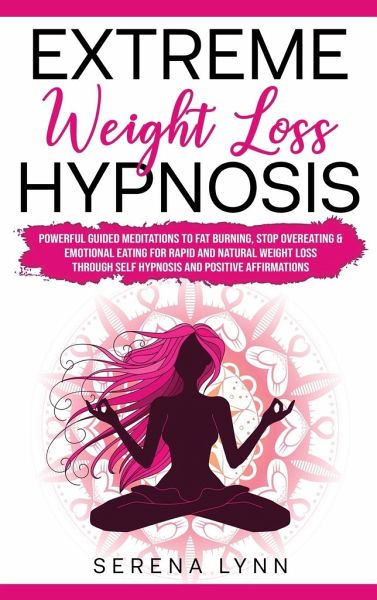
The body scan is a meditation technique that can help you to discover your feelings and understand how they affect you. This practice is particularly useful if you are overwhelmed by certain emotions or are unsure of how you feel. By doing a body scanning exercise, you can become more aware about your feelings and feel more connected to your physical sensations. While you might initially feel nervous or confused when you first do a body scanning exercise for the first time, you can calm down and let go of your anxiety to allow you to return to the process.
The next time you perform a body scan, focus on the physical sensations you feel. This will help you recognize emotions more easily. To get a better understanding of yourself, you can also tune into the emotions and inner somatic sensations. Here are some guidelines for performing a body scan meditation. Here are some examples of the benefits that you can look forward to. After you have mastered the basics you can move on to other exercises to improve your skills.

For a body scan, you should find a comfortable position. The most comfortable way to do this is to sit or lie down. It is important to find the most comfortable position so that you can either sit or lie down with no distractions. The best place to perform a body scan is a quiet area where you are comfortable and where you are not distracted. You might also want to lay down and place a blanket over your torso to support your back and shoulders.
When you're planning to lose weight, a body scan is an excellent way to monitor your progress. It will tell you your basal metabolism rate (or BMR), which represents your body's baseline rate. It will also give you the number of calories you burn before you go to work. This will allow you to determine whether you should exercise. And, if you're doing too much, it's important to monitor your caloric intake and stick to it.
A body scan is a meditation that you can practice with a therapist. It is a safe, low-risk and effective way to reduce stress and pain. Whether you decide to practice it on your own or work with a therapist, the goal of your practice should be clear. If you are struggling to relax, you should not rush into the practice. If you are feeling stressed, limit the amount of sessions.

The body scan meditation can be a wonderful way to cultivate mindfulness. It is one of the best ways to begin a mindfulness meditation practice. Listen to the audio meditation and train your brain to be present with your body. By focusing on the parts of your body, you can become more aware of the subtle energies in your body and experience them as they happen in your everyday life. There are no limits to the benefits of this meditation.
FAQ
Which diet is best for me?
Your lifestyle and individual needs will determine the best diet for your body. Also, consider your energy expenditure, whether you prefer low-calorie food, and whether you enjoy eating fruits or vegetables.
Intermittent Fasting is an alternative to traditional fasting if you are looking to lose weight. Intermittent Fasting means that you eat only specific meals throughout your day and not three large meals. You may find that this method works better for you than traditional diets that include daily calorie counts.
Some studies suggest that intermittent fasting may improve insulin sensitivity and reduce inflammation, which can lead to improved blood sugar levels and reduced risk of diabetes. Other research suggests that intermittent fasting may promote fat loss and improve overall body composition.
Is cold a sign of a weak immune response?
Cold causes a decrease in immune system strength. This is because white blood cells are less effective at fighting infection. But, cold makes you feel better. Your brain releases endorphins that reduce pain.
What is the problem?
BMI stands for Body Mass Index, which is a measurement of body fat based on height and weight. This formula calculates BMI.
The weight of a kilogram divided by its squared height in meters.
The result is expressed as a number from 0 to 25. A score of 18.5 or higher indicates overweight, while a score of 23 or higher indicates obesity.
A person who weighs 100 kg and has a height of 1.75 m will have a BMI of 22.
How can I control my blood pressure?
Find out the causes of high blood pressure first. Then you need to take steps to reduce this cause. This could mean eating less salt, losing some weight, taking medication, and so on.
It is important to ensure that you get enough exercise. You can also walk if you don’t have the time.
Consider joining a gym if your current exercise regimen is not satisfying you. It's likely that you will want to join a gym with other people who are working towards the same goals as you. It is easier to adhere to a fitness routine when someone else will be there with you.
How often do I need to exercise?
A healthy lifestyle requires regular exercise. But, you don't need to spend a specific amount of time exercising. The key is finding something you enjoy and stick with it.
Three times a week, you should be aiming to complete 20-30 mins of moderate intensity activity. Moderate intensity means that you will still be working hard even after your workout is over. This type is good for burning around 300 calories.
For those who prefer to walk, you can go for 10-minute walks four times a week. Walking is low impact and easy on your joints.
Jogging is an alternative to running. You can do it for as little as 15 minutes each day. Running is an excellent way to lose weight and tone your muscles.
Start slowly if you aren't used to doing exercise. Begin with 5 minutes of cardio every other day. Gradually increase the duration until you reach your goal.
Statistics
- According to the Physical Activity Guidelines for Americans, we should strive for at least 150 minutes of moderate intensity activity each week (54Trusted Source Smoking, harmful use of drugs, and alcohol abuse can all seriously negatively affect your health. (healthline.com)
- nutrients.[17]X Research sourceWhole grains to try include: 100% whole wheat pasta and bread, brown rice, whole grain oats, farro, millet, quinoa, and barley. (wikihow.com)
- According to the 2020 Dietary Guidelines for Americans, a balanced diet high in fruits and vegetables, lean protein, low-fat dairy and whole grains is needed for optimal energy. (mayoclinichealthsystem.org)
- Extra virgin olive oil may benefit heart health, as people who consume it have a lower risk for dying from heart attacks and strokes according to some evidence (57Trusted Source (healthline.com)
External Links
How To
What does the term "vitamins" mean?
Vitamins are organic substances found naturally in food. Vitamins are essential for our bodies to absorb nutrients from the foods we eat. Vitamins cannot come from the body so food must provide them.
There are two types if vitamins: water soluble, and fat soluble. Water-soluble vitamins dissolve easily when they are dissolved in water. Vitamin C,B1(thiamine), B2 (2riboflavin), and B3 (3niacin), as well as vitamin C,B1, B2 (riboflavin), and B3 (niacin), vitamin B6 (pyridoxine), vitamin folic acid (biotin), pantothenic, and choline are examples. The liver and fat soluble vitamins are stored within the liver and in fatty tissue. Some examples include vitamin D and E, K, A and beta carotene.
Vitamins are classified based on their biological activity. There are eight major groups of vitamins:
-
A - Essential for healthy growth and health maintenance.
-
C - important for proper nerve function and energy production.
-
D - Vital for healthy bones and teeth
-
E is needed for good reproduction and vision.
-
K - required for healthy muscles and nerves.
-
P - Essential for strong bones and teeth.
-
Q - Aids in digestion and absorption.
-
R – Required for the formation of red blood vessels.
The recommended daily allowance (RDA) of vitamins varies depending on age, gender, and physical condition. The U.S. Food and Drug Administration (FDA) sets the RDA values.
For adults 19 years and over, the RDA of vitamin A is 400mg per day. Because it is essential for the development of the fetus, pregnant women should consume 600 micrograms per daily. Children ages 1-8 require 900 micrograms per day. Children under 1 year old require 700 micrograms daily, while infants over one year old need 500 micrograms every day. This decreases between 9 and 12 months.
Children between the ages of 1-18 need 800 micrograms per daily for obesity, while children overweight require 1000 micrograms. Children underweight or obese will need 1200 mg per day.
Children 4-8 years old who have anemia must consume 2200 micrograms of Vitamin C daily.
2000 micrograms per person is necessary for general health. Breastfeeding or pregnant women require 3000 micrograms per daily due to higher nutrient demands.
Adults over 70 require 1500 micrograms each day, since they lose around 10% of their muscle mass every decade.
Women who have been pregnant or are lactating require more than the RDA. Pregnant mothers need 4000 micrograms per daily during pregnancy and 2500 after giving birth. Breastfeeding moms need 5000 micrograms each day when breastmilk production occurs.